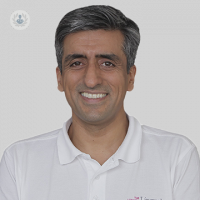Functional appliances in orthodontics: 7 of the most important Q&As
Written by:The majority of orthodontic treatments among children and young people in the UK consist of fixed braces. The optimum age for treatment is about 12, or when adolescence is reached. At this stage in a young person’s development, braces can harness the growth and help position permanent teeth, moving everything into harmonious functional and aesthetic alignment. Leading orthodontic specialist, Dr Asif Chatoo talks us through this popular treatment.

1.What is a functional appliance?
About 25 per cent of children and young people in the UK have protruding teeth. Research shows that they are more likely to damage their front teeth in an accident. Children with this problem, also known as an overjet or a Class II malocclusion, should be referred to an orthodontist, who may recommend two phases of treatment. The first phase would be functional appliances followed by fixed braces.
Functional appliances can either be fixed or removable. Removable functional appliances can either be in one or two parts. They need to be worn full time and should only be removed for eating food, playing sport and cleaning your teeth and braces. Functional appliances improve the bite by changing the relationship between the upper and lower teeth to reduce the prominence of the upper teeth. The subsequent treatment with fixed braces improves the alignment of the teeth and creates a more ideal bite.
2. What are the different types of functional appliances?
There are many different types of functional appliance but the most widely used in the UK is the Twin Block, so-called because it comes in two parts. Once clipped onto your teeth, the lower part fits into the upper appliance, helping the lower jaw forward.
3. Does a functional brace change the shape of the face?
Yes, a functional appliance can change the shape of the face and profile as it compensates for a discrepancy between the size of the upper and lower jaw, improving the way the teeth bite together. Once the first phase of treatment has been completed, the protruding upper teeth should no longer stick out prominently beyond lower teeth. The changes are subtle but important.
4. How long does a patient need to wear a functional brace?
You will usually wear functional appliances for about a year. During this time, you will require regular appointments with your orthodontist and you should see your dentist too.
5. How effective is a functional appliance and what happens if it is unsuccessful?
Functional appliances are usually effective because they are prescribed to those who will benefit most. Sometimes, they are recommended earlier. This is called interceptive treatment and you can read more on interceptive orthodontics on the London Lingual Braces website.
Research into orthodontic treatment for prominent upper front teeth shows that a course of treatment with functional appliances is likely to be successful in improving the relationship between the upper and lower jaw. The second phase of treatment with fixed braces makes the teeth straight and settles the bite into an ideal relationship.
6. How often should I wear my functional appliance?
You should wear your functional appliances at all possible times, except when playing sport and swimming. The use of a mouth guard for sport is also recommended.
7. How do I look after my functional appliance?
It is always important to take good care of your teeth with regular brushing and flossing, but especially when you are undergoing orthodontic treatment, and of course you should keep your appliances clean too.
Dr Asif Chatoo is a London-based Orthodontist and founder of The London Lingual Orthodontic Clinic. Learn more on his profile about how he can help you.



